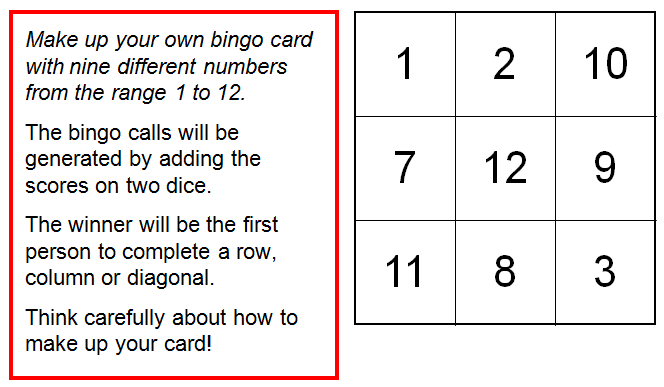Chance combinations
Can you design a bingo board that gives you the best chance of winning?
Problem
This activity was developed by the epiSTEMe project. More information about the project, and the other epiSTEMe activities available on NRICH, can be found here.
Two-Dice Bingo
This activity aims to apply ideas about the probabilities of rolling different totals with a pair of dice.
Activity
Image

This is available as a slide for display, in PowerPoint or PDF formats.
Introduce the activity.
Give students a minute or two to make up their own bingo card.
Review strategies for making up the card. Suitable questions might be:
- Who has included 1 in their card? Good decision? Why, or why not?
- Who has included 7 in their card? Good decision? Why, or why not?
- Does it matter where 7 is placed? Why, or why not?
- Invite more suggestions regarding good and bad choices and placements.
Give students an opportunity to modify their bingo card in the light of the discussion.
Finally, throw dice to generate calls, until a winner materialises.
If time permits, explore whether there is an optimal grid. Suitable questions might be:
- How many possible winning lines go through each square on the grid.
- Where would it be best to place the totals that are most likely to be thrown?
